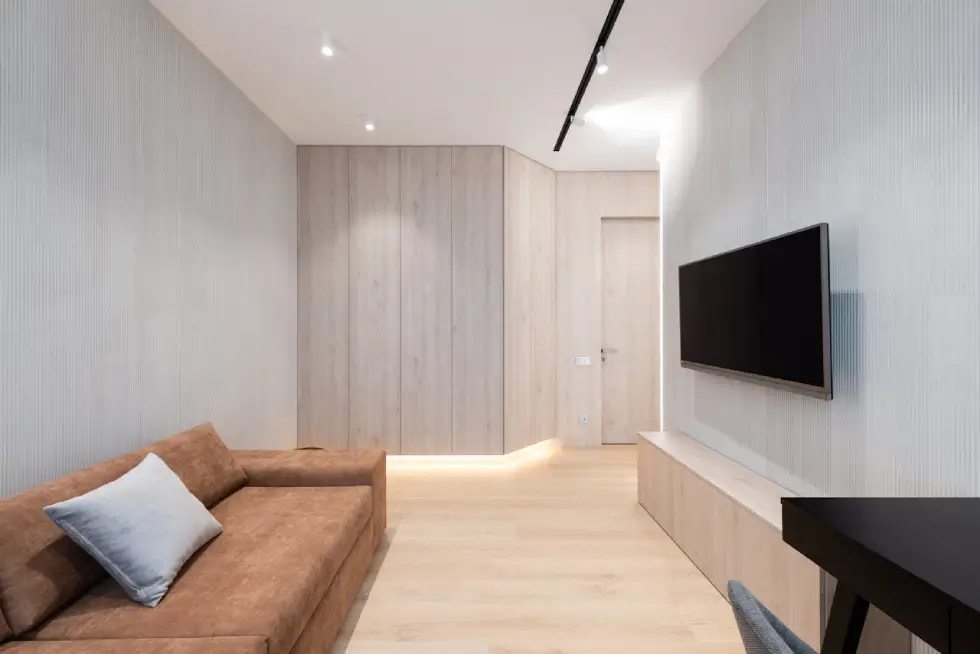When it comes to choosing the right flooring for your space in Singapore, the options can be overwhelming.
Among the most popular choices are SPC (Stone Plastic Composite) and LVT (Luxury Vinyl Tile) flooring.
Both types of vinyl flooring offer unique advantages, making them ideal for various environments.
This guide will explore the key differences, durability, maintenance, and overall benefits of SPC and LVT flooring, helping you make an informed decision that suits your needs.
Understanding SPC and LVT vinyl flooring
Stone Plastic Composite (SPC) and Luxury Vinyl Tile (LVT) flooring are two of the most popular choices for homeowners and businesses alike.
Both are part of the vinyl flooring family, offering durability, aesthetic appeal, and cost-effectiveness.
However, they differ in composition, performance, and installation requirements. Understanding their advantages and disadvantages can help you make an informed decision based on your needs.
What is SPC flooring?
Stone Plastic Composite (SPC) is a newer innovation that combines limestone powder, PVC, and stabilizers to create a rigid core structure.
This gives SPC flooring higher durability and resistance to dents, moisture, and temperature fluctuations.
Unlike LVT, SPC has a stiffer feel underfoot and typically requires foam underlayment for cushioning and sound absorption.
Advantages of SPC flooring
- High Durability & Impact Resistance – SPC flooring is resistant to dents, scratches, and impacts, making it ideal for high-traffic areas like hallways, commercial spaces, and offices.
- Waterproof & Moisture-Resistant – The rigid core structure makes SPC flooring 100% waterproof, an excellent choice for kitchens, bathrooms, and laundry areas.
- Cost-Effective Option – Due to the inclusion of limestone powder, SPC flooring is generally more affordable than LVT while maintaining high durability.
- Easy Click-Lock Installation – SPC uses a floating floor system, allowing for quick installation without adhesives.
Disadvantages of SPC flooring
- Rigid Core Sensitivity to Uneven Floors – Unlike flexible LVT, SPC requires a perfectly level subfloor. Any unevenness can lead to joint failure or lifting over time.
- Potential Joint Dislodging Issues – The click-lock system of SPC flooring may experience joint dislodgement due to its rigid nature, especially when installed over uneven subfloors.
- Underlayment is Required – SPC typically requires foam underlayment to reduce sound and improve comfort. However, this can also impact the stability of its click-lock joints over time.
- Thicker But Not Necessarily Better – Some SPC products include foam layers in their thickness measurements, making them seem thicker than LVT. Consumers should check if the actual core thickness justifies the cost.
- Harder to Repair – Unlike LVT, where individual planks or tiles can be replaced easily, SPC flooring often requires removal of an entire section for repairs.
What is LVT flooring?
Luxury Vinyl Tile (LVT) consists of multiple layers of vinyl, topped with a realistic photographic layer that mimics natural materials like wood, stone, or ceramic.
It is known for its versatile designs, soft underfoot feel, and durability. LVT is available in both click-and-lock and glue-down formats, making it a flexible option for various spaces.
Advantages of LVT Flooring
- Superior Design & Aesthetics – LVT offers a wide range of realistic wood and stone patterns, providing a high-end look at a fraction of the cost.
- Comfort & Sound Reduction – LVT has a softer and more flexible structure, making it more comfortable underfoot and reducing noise levels.
- More Flexible Installation Options – LVT comes in both glue-down and click-lock formats, making it adaptable for various residential and commercial applications.
- Proven Longevity – LVT has been on the market for over a decade, proving its durability, while SPC is still relatively new. Many flooring suppliers are phasing out SPC due to reported issues with joint failures.
Disadvantages of LVT Flooring
- Higher Initial Cost – LVT is slightly more expensive than SPC due to its higher-quality materials and added layers for flexibility and durability.
- Not Completely Waterproof – While LVT is highly water-resistant, it is not 100% waterproof like SPC. Prolonged exposure to water may lead to issues with adhesive-based installations. Our click-and-lock LVT will not have issues as it does not requires adhesive.
- UV Sensitivity – Some LVT products may fade or discolor over time when exposed to direct sunlight or UV rays. Choosing UV-resistant LVT can mitigate this issue. Our click-and-lock LVT are UV-resistant.
SPC vs LVT vinyl flooring: Which one should you choose?
Both SPC and LVT flooring offer excellent benefits, but the right choice depends on your specific needs:
Choose SPC Flooring if you need affordable, waterproof, and highly durable flooring for high-traffic areas. However, ensure your subfloor is perfectly level to avoid joint dislodging issues.
Choose LVT Flooring if you prioritize design versatility, comfort, and noise reduction. It is an excellent option for residential and commercial spaces where a softer feel and long-term reliability are desired.
Conclusion
While SPC flooring is often marketed as a more advanced option, it has yet to stand the test of time. In contrast, LVT flooring has been a trusted choice for over a decade and remains a preferred option for many homeowners and businesses.
SPC is not necessarily better than LVT—each has its pros and cons. Before making a decision, consider factors like installation surface, durability needs, budget, and long-term performance.
For expert advice on choosing between SPC or LVT vinyl flooring, contact us today for a free quotation and site assessment.

